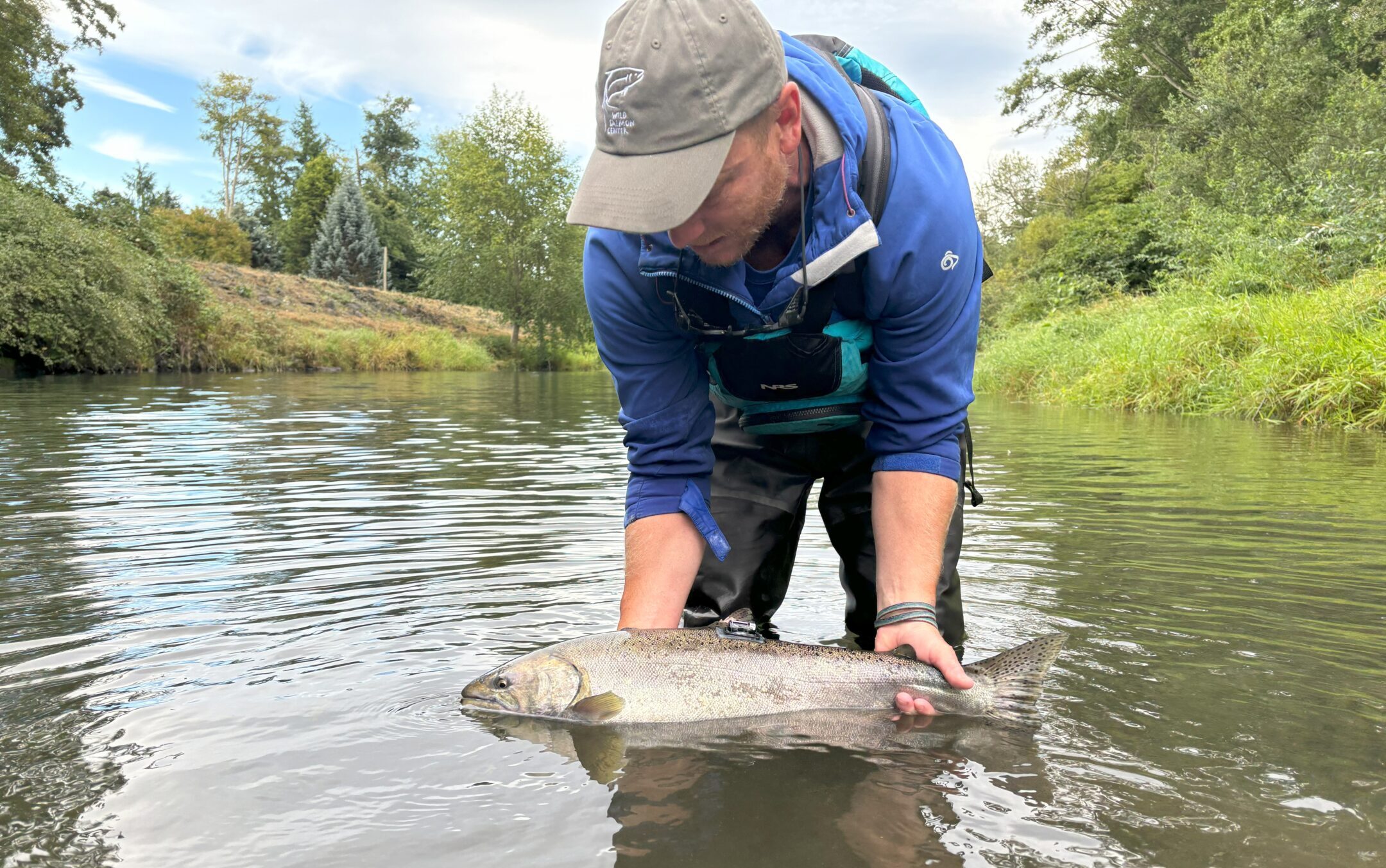Wild Salmon Center’s new Senior Wild Fish Manager aims to be an asset to Tribal, state, and federal fisheries managers across Washington.
James Losee knows what it feels like to work as a fisheries manager: walls of meetings, high stakes decision-making, the gnawing sense that there are great new tools out there that could really help—and not enough time in the day to go and find them.
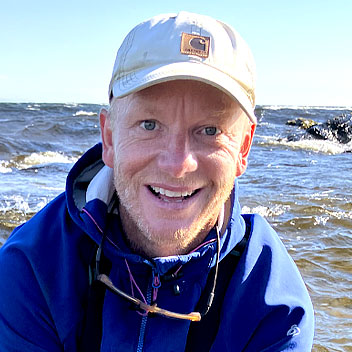
“I’ve been in a lot of situations where someone has shared a big idea with me, or results from really exciting fisheries research,” Losee says. “And I’ve thought, I wish I had an extra hour to see if it applies to a problem I’m trying to solve.”
In Fall 2024, he joined Wild Salmon Center as our Senior Wild Fish Manager for Washington State. For Losee, the new role follows a 25-year career devoted to hands-on fisheries management—both at federal agencies like NOAA, where he focused on high seas salmon research, and at the Washington Department of Fish & Wildlife, where he shaped statewide policy on where, when, and how people fish. In 2020, for example, Losee led a WDFW decision to suspend the practice of fishing from a boat for the season. The move—an urgent attempt to reduce wild steelhead mortality but keep state and Tribal fishers on the water—represents the hard but necessary decisions that fisheries managers face at a time of widespread decline for Pacific salmonids.
Losee’s new role with Wild Salmon Center is no less ambitious. To reverse the alarming trajectory of Olympic Peninsula steelhead and salmon through science and policy, Losee’s prepared to step in where his former government colleagues might not have time or resources. The stakes are high, with both Olympic Peninsula steelhead and Chinook now petitioned for listing under the Endangered Species Act.
“While I was at WDFW, I saw how effective Wild Salmon Center is at improving habitat and water quality for wild fish,” Losee says. “But we can also do more to apply better tools to harvest and angling encounters.”
Losee is ready to explore new strategies with the Tribal, state, and federal fisheries managers. He’s one of the world’s leading anadromous trout experts and an author of more than 40 peer-reviewed papers—expertise that helped to inform WDFW’s embrace of more proactive protections for Washington salmonids including steelhead.
While I was at WDFW, I saw how effective Wild Salmon Center is at improving habitat and water quality for wild fish. But we can also do more to apply better tools to harvest and angling encounters.”
Wild Salmon Center Senior Wild Fish Manger James Losee
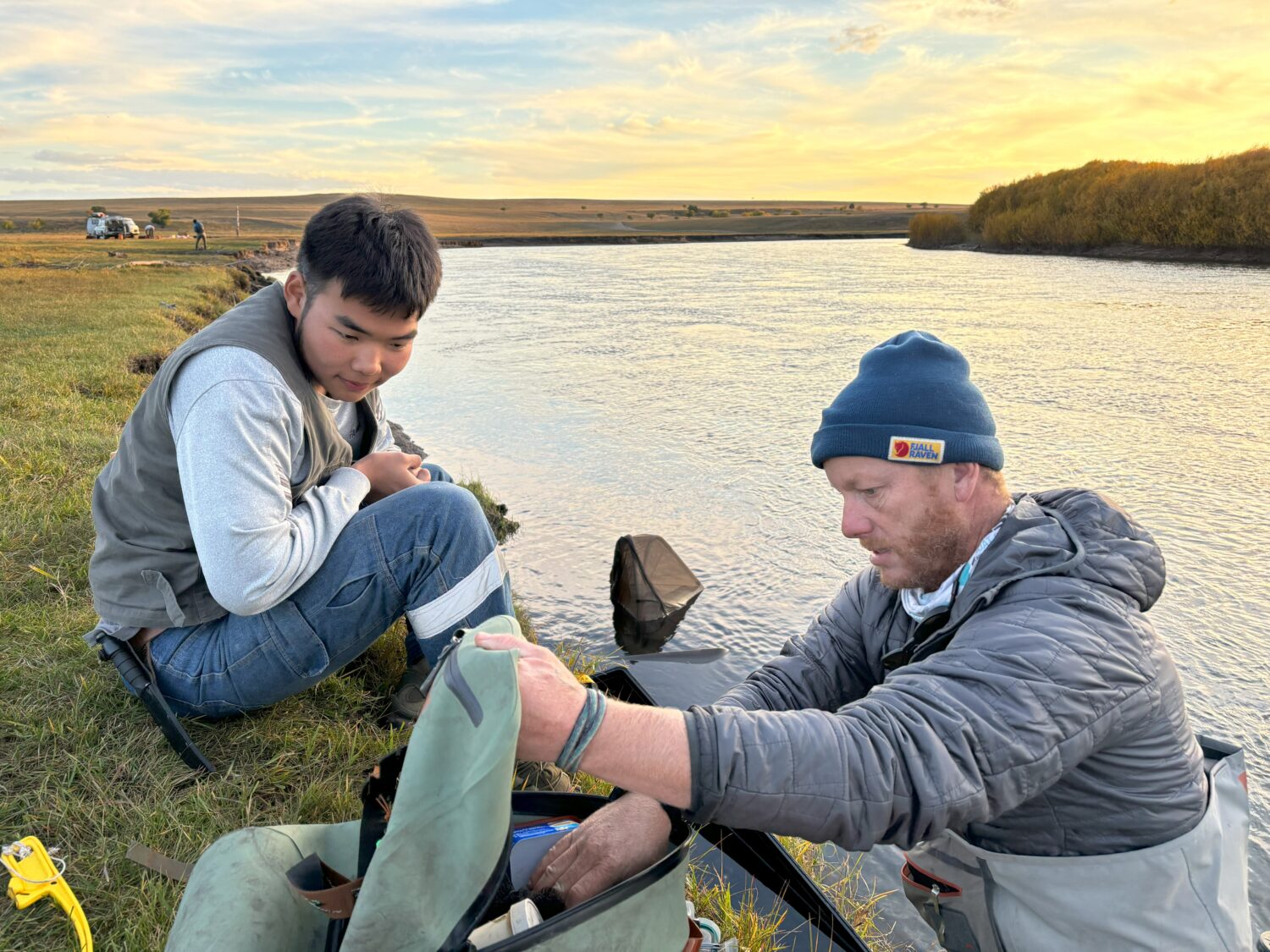
“James achieved huge conservation wins for salmon and steelhead in his past roles with WDFW and NOAA,” says WSC Watershed Restoration Direction Jess Helsley. “We’re thrilled to leverage his expertise in Washington and beyond, as part of WSC’s growing policy team.”
Below, Losee shares his new team’s big vision, why fisheries management is for everyone, and what keeps him up at night.
Wild Salmon Center: You’ve spent decades in fisheries management, and you’ve just reupped with this new role at Wild Salmon Center, albeit now from the outside. So what’s your salmon origin story?
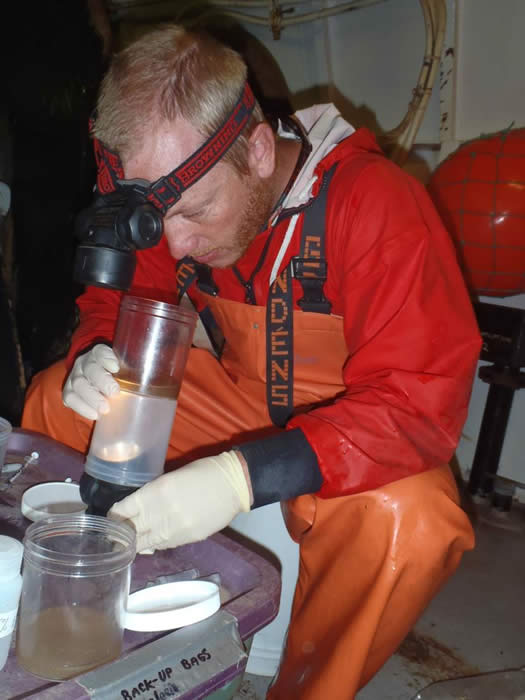
James Losee: For me, as a kid, it was all about being outside with bugs, snakes, and fish. My family moved to Yakima, Washington, when I was two weeks old, so the rivers and lakes near Yakima are where I ran around as a kid—fishing rod in hand.
I’ve always had a deep connection to the outdoors and the water. If there’s water nearby I want to be in it. These days I spend multiple days a week on the water, surfing, fishing, free diving, spearfishing or just walking a stretch of stream. At some point when I was growing up, I started thinking about what kind of work would be meaningful, and close to water. Fish biology has always felt natural. And it appealed to my curiosity, because this is an area with a lot of conservation questions—and an urgency to find answers. Even today, 25 years into my career, I’m learning something new everyday.
WSC: What do you hope to do in your new role with Wild Salmon Center that you maybe couldn’t in your time working with state and federal agencies?
One exciting thing is that in this new role, there’s an expectation that I’ll be staying informed on the latest scientific literature and connecting with fisheries managers in other states and parts of the world.
At WDFW, I was responsible for managing the largest geographic region in Washington State, and leading a big, talented team of fisheries professionals, scientists, and technicians. That meant time and resources were very tight. For many of my former colleagues there, this challenge remains. Despite being on a team with absolute experts in their fields, it was really tough to bring science and policy together to create outcomes that benefited fishers while still prioritizing wild fish.
Now, with WSC, I hope to explore new ideas and bring those to the table in a way that is efficient for fisheries managers and benefits wild fish in real time.
In this new role, I’ll be staying informed on the latest scientific literature and connecting with fisheries managers in other states and parts of the world.”
Wild Salmon Center Senior Wild Fish Manger James Losee
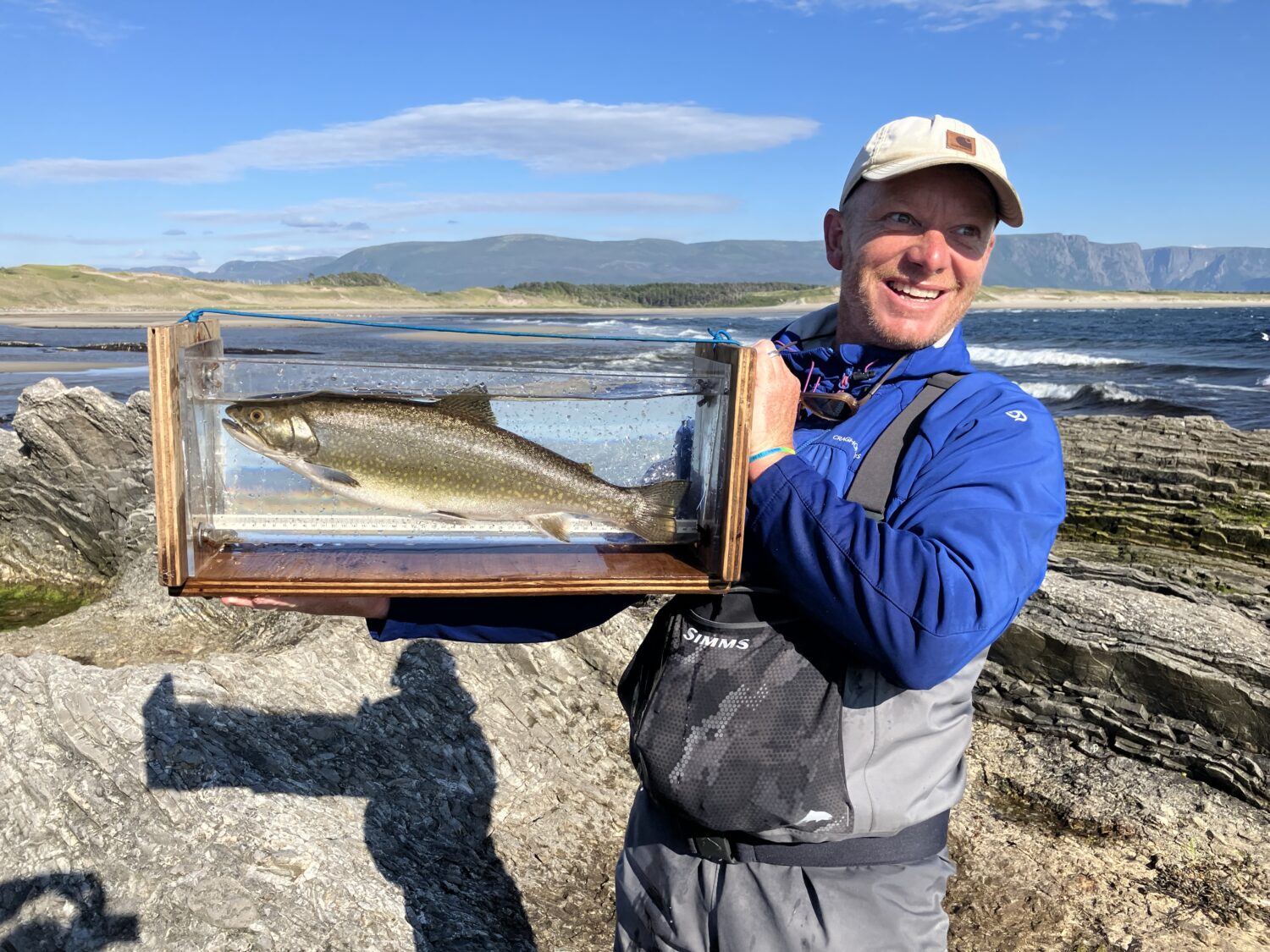
WSC: You want to be an asset for fisheries managers. What do you hope WSC and our partners in government can achieve by working together more closely?
Well, ultimately, we’d like to see fisheries managers focus on a long-term vision for our shared fisheries resources.
Right now, fisheries managers often have to make rapid decisions to address short-term problems. So they rely on the tools available in that moment. But we know that salmon face a really uncertain future. The tools we used in the past may not be working today. Meanwhile, new ideas are being developed and tested outside of the fisheries management space—and those tools are getting better every day.
So our hope is that we can help managers find the space to take a breath and do some long-term planning. That’s our biggest goal, and it’s ambitious, but definitely achievable if we all work together and challenge ourselves to think big.
On a smaller scale, we’re also looking at a number of watersheds that are performing really well. With the leadership of Tribal governments, wild fish on the Quillayute and Hoh Rivers are likely to be stable for years to come. So we’re looking to support state and Tribal agencies to keep protecting these places, and keep these populations healthy and resilient.
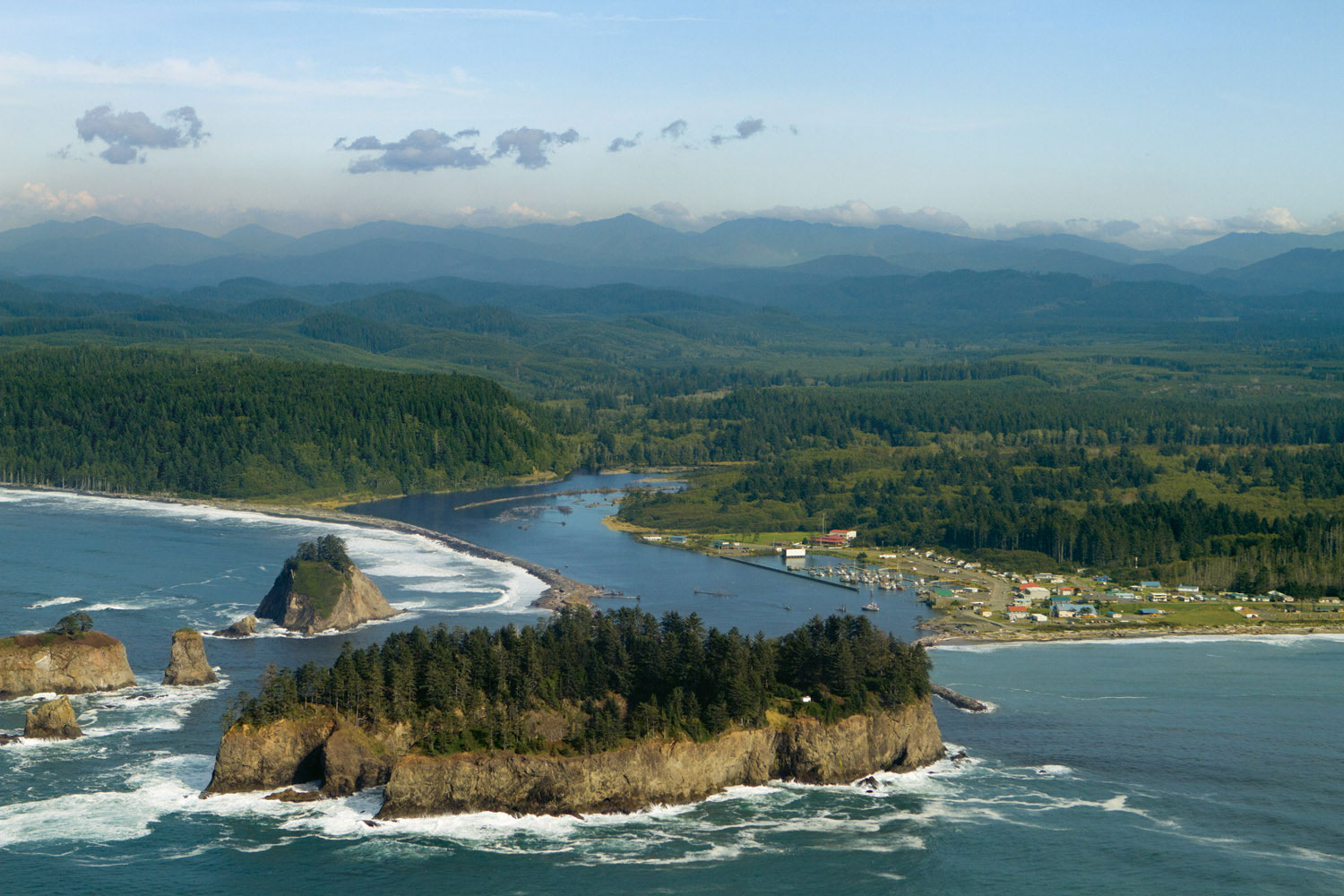
WSC: We’ve noted a paradigm shift underway at WDFW, from a focus on “abundance—trying to maximize steelhead numbers—to the broader health and resiliency of these populations. What led to this shift?
The salmon management world has generally been all about the people who want to catch and eat salmon. There are important reasons for that, especially considering the cultural significance of salmon harvest to Tribal governments. But at the state level, fisheries managers get their mandate from a broader group of taxpayers, so it can’t only be about the sport fishers who want to catch and kill.
Most people in Washington State don’t fish. Many will never catch or touch or see a salmon. And yet they still care. We know this—its been surveyed. People who live here want to feel confident that their natural resources are healthy and being cared for. When they cross a salmon-bearing stream, they want to look down and know that the life in it is persisting.
Most people in Washington State don’t fish. Many will never catch or touch or see a salmon. And yet they still care. When they cross a salmon-bearing stream, they want to look down and know that the life in it is persisting.”
Wild Salmon Center Senior Wild Fish Manger James Losee
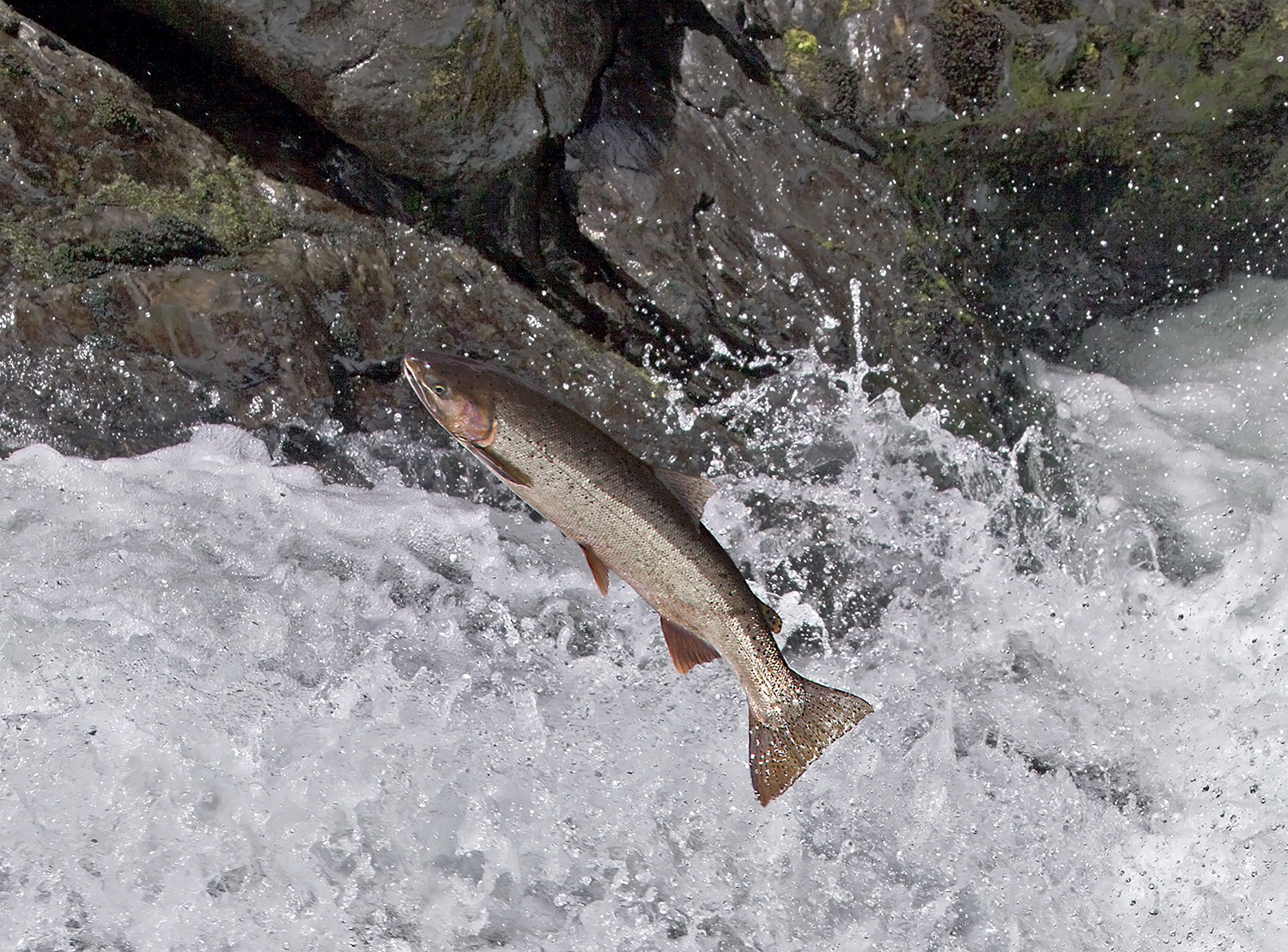
We choose this place to live and it brings a sense of self and wholeness to know that our home is healthy—that the ecosystem is protected. On the other hand, when we talk to Tribal leaders, it doesn’t take long to see that consuming salmon is really important to them in a way that’s even bigger—perhaps even in a way a non-Native person can’t understand. It’s about feeding the mind, body, and soul.
WDFW’s mandate is first to preserve and protect natural resources, and then support opportunities for sport and commercial fishers. It’s that first part that serves all of us in the Pacific Northwest. Most of whom, as we’ve said, do not go fishing. WDFW has made progress on shifting that mindset. This shift will benefit all of us, but there is still a long way to go.
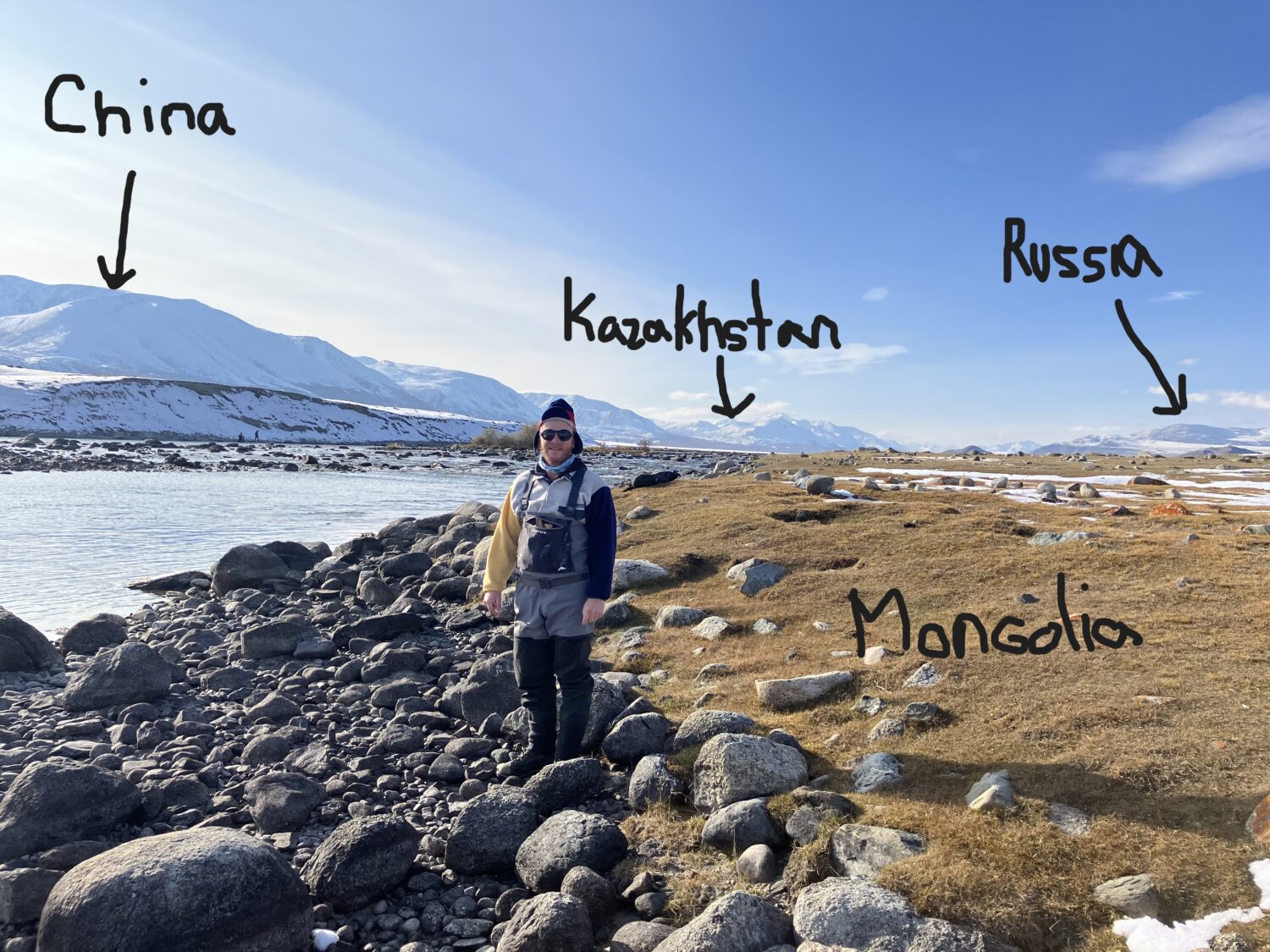
WSC: People say conservation work is a marathon, not a sprint. What keeps you motivated?
I’d say it has to be the underloved fish in salmon conservation, specifically steelhead and cutthroat trout. I’m the cofounder of an organization called the Coastal Cutthroat Trout Coalition, and my current and past fisheries research is based in large part on filling data gaps on seagoing trout species including coastal cutthroat, arctic char, brown trout, and brook trout.
My research has taken me all over the world, from Mongolia to Newfoundland, Iceland, and Sweden. It’s work that has allowed me to think outside the box and apply tips and tricks learned from other people and places to the work we do here in Washington. I’m thinking of examples like the benefits of selective fishing, or catch-and-release regulations over full fishery closures.
This is what I lay in bed at night thinking about. How do we take the best tools available and apply them to the fish management challenges of today? Over the course of my career, I’ve come to see it as my responsibility to help where I can to reverse the trajectory of wild salmon decline.
I’m proud of the work I’ve done so far, and the small difference I’ve made for wild fish and the people in Washington who depend on them. I can’t wait to continue this work at Wild Salmon Center—in partnership with my Tribal, state, and federal colleagues both here and around the globe.
I’m proud of the work I’ve done so far, and the small difference I’ve made for wild fish and the people in Washington who depend on them. I can’t wait to continue this work at Wild Salmon Center.”
Wild Salmon Center Senior Wild Fish Manger James Losee
